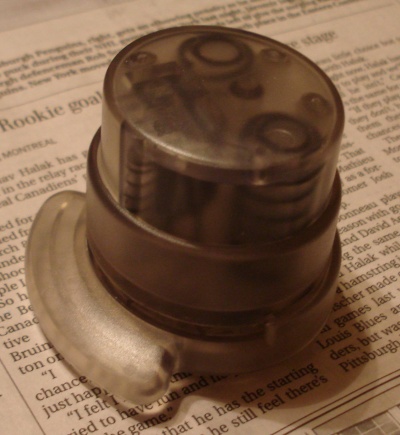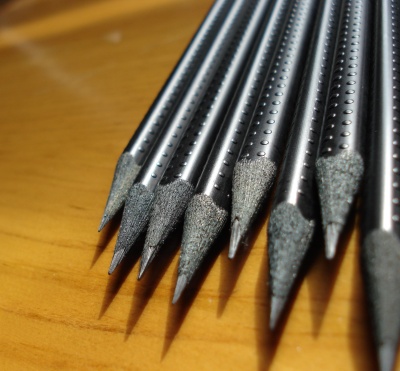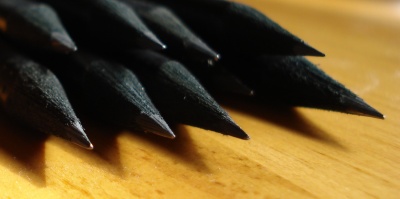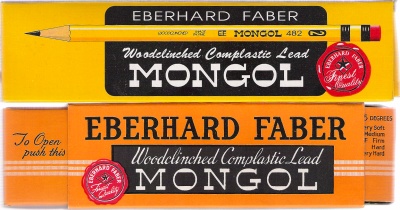 While Mitsubishi, Tombow, and Pentel may be better known in the west, there is at least one more quality Japanese pencil manufacturer of note: Kita Boshi.
While Mitsubishi, Tombow, and Pentel may be better known in the west, there is at least one more quality Japanese pencil manufacturer of note: Kita Boshi.
The Japanese pencil industry website tells me of many other companies in the industry, but Kita-Boshi are the only one of these whose products I have been able to source.
I am not sure what is going on, because two different grades of the HIT No. 9900 appear to be different pencils, despite the same name and model number.
The 4B is round with an unfinished cap, and black with gold stamping. There is a gold band near the cap. It has these markings:
Obverse: Kita-Boshi HIT [8 Japanese Characters] 4B
Reverse: For Draftmen, Designers, Copy-writers No. 9900 4B
The HB is hexagonal, with colourings I have never seen in a pencil: Brown with gold stamping, and a green band near the cap.
It is marked:
Obverse: Highest Quality * KITABOSHI * HIT * HB
Reverse: For Retouching & Special Drawing No. 9900 HB
Another difference: The 4B core is approximately 50% wider than the HB core.
I can imagine the sincere but slightly awkward slogan “For Draftmen, Designers, Copy-writers” being enjoyed by many, though less so by Draftsmen and Draftswomen.
Both pencils, like the Pentel, have matte rather than glossy finishes. This is fine with me, and is quite pleasing. It is a quality finish, while being quite practical.
Both pencils sharpen easily, and lay down rich smooth dark lines. The 4B is almost unique as far as I know in being a round pencil at that grade. Its wide core, good looks, and quality graphite would truly make it a “hit” if it was more widely available.
The HB is very good in its category. The standards of Japanese woodcase pencils are very high, and this pencil doesn’t disappoint. It looks good, writes well, and while not as rich as the Mono 100 or Hi-Uni, still lays down a line better than most pencils.









 While Mitsubishi, Tombow, and Pentel may be better known in the west, there is at least one more quality Japanese pencil manufacturer of note: Kita Boshi.
While Mitsubishi, Tombow, and Pentel may be better known in the west, there is at least one more quality Japanese pencil manufacturer of note: Kita Boshi.